|
No, I didn’t get married. Though, I am currently accepting applications! As you may be curious, I’ve changed my name so that it more truly reflects my identity: Malii Watts Carolyn. Carolyn is my given middle name after my paternal grandmother, and is now my last name. Watts is my maternal grandfather’s last name, and I’m honored to include it as my middle name. I am faithful to the reality that we optimize our living when we unite misaligned parts of the whole. When we show up as full human beings within our virtual networks, we make ourselves more relatable and accessible to those willing to reach across the ethersphere. Two years ago, I began publishing monthly blog posts via #BlahBlahBlog on my website in order to grow an online identity by sharing my professional expertise and personal character. I asked that you keep your “virtual dial” tuned into this space where our virtual presence intersects, and promised expert insights and thought partnership around the opportunities awaiting us in the diversity of our “glocal” world. I hope you have experienced that I’ve delivered*.
[To date, my most clicked blog posts are #Unfriend, We Are Our Own Work and We Are (Not) Free.] In reflecting on my decision to name my own damn self, I am reminded to live deliberately. I'm faithful to the reality that we optimize our living when we unite misaligned parts of the whole. In the training room, you may have heard me suggest that this work requires personal choices and practical changes. Consider yourself invited to be your truer self. Each time I share the story of my name, it's a gesture of authenticity. And when our living intersects like this, you may be more willing to reach across the ethersphere; to make different personal choices; and motivate yourself toward practical change. Virtually Yours, Malii Watts Carolyn *Contact me at Carolyn@EngageBetween.com to share your feedback on this blog series, and suggest blog topics. EngageBetween…people. place. purpose.
5 Comments
Hard, sweaty workouts have not been my thing. Yet, I’m now on day #9 of my routine. Despite the initial pain, I’m achieving deep and sustained satisfaction. I’m no sadomasochist. I’m a 30-something woman working to keep a toned body. Yoga is my love, though she needs a companion to help her achieve the results I want. I recently adopted burst training, also known as high-intensity interval training[i], after an inspiring conversation with wellness wonder Sharon Porter. According to my online research, the body can respond to working out in roughly 30-second stints—and at 90-100% maximum effort—by burning fat for the next 24 hours. You’re welcome! I am playing with an original idea to apply the burst training tactic to the fitness of one’s cultural agility[ii]. In 15 years partnering with people to engage between differences, I’ve been running a figurative marathon. Incremental change over time has been a mantra I’ve advised you to take on, too, as you make way to wholly become the people and places that honor shared purpose. To me, a paced stride of steps toward change makes sense. Especially when among groups of people who both, “collectively create results that nobody wants,”[iii] and demonstrate ambivalence to the possibility of doing differently to achieve different results. While I stand by this more classic strategy of choice (i.e. the figurative marathon), I am leaning into new learning. I invite you to consider with me: What if the burst training approach was applied as an expedient to promote cultural competence development around the differences that shape and strengthen[iv]? Here are some questions I’m posing so far as I work out this knot of an idea:
It would be a wow experience! When applied to training or workshop design, my idea of so-called culture burst™ training might offer simple choices to:
As your personal trainer, I would support you to build your mental muscle to achieve cultural agility to the level of personal power—whether individually or with a group; face-to-face or virtually; with single or layered goals as our guide. Ready to join me for a hard, sweaty workout?! Virtually Yours, Malii Brown EngageBetween…people. place. purpose. [i] Burst training, also known as high-intensity interval training (HIIT), involves short bursts of high-intensity style exercise for 30-60 seconds followed by one to two-minute recovery periods.
[ii] As I define it, “cultural agility” is the ability to balance cultural knowing and uncertainty for optimized results in real-life, real-time scenarios. [iii] Quote attributed to Otto Scharmer from his book with Katrin Kaufer, Leading from the Emerging Future: From Ego-System to Eco-System Economies. In context, the quote reads, “We collectively create results that nobody wants because decision-makers are increasingly disconnected from the people affected by their decisions. As a consequence, we are hitting the limits to leadership—that is, the limits to traditional top-down leadership that works through the mechanisms of institutional silos”. [iv] While my word selection includes terms like “expedient,” “burst” and “intensity”, I maintain that cultural competence development and the one’s practice of inclusion and equity is a process no matter the path chosen. By the way: As a false cognate, the word, “expedient,” reflects the charm of the English language to sound like one thing and mean another. I looked it up: An expedient (n.) is a means to an end; it promotes a proposed or desired objective. Venkat, a discerning participant in a recent training I led, asked, “In global, virtual work environments, how do we respond—when others do not?” I floated the question to our group. My own in-the-moment response picked up on the cultural dimensions on which we focused in our two-day training: Conscious attention and creative play with the tools of Relationship, Hierarchy and Context[i]. A couple of activities and one pause for reflection later, the amplified intelligence of the group articulated another response to the question. A seed of an idea planted in the mind of one participant had been cultivated with reflection partners who were compelled to share with the whole group: “Listen. Understand. Forgive.” We need not merely survive the uncertainties that we experience with one another at work. That ambiguity that we may feel—as we interact with differences that are different than our own—offers opportunities to engagebetween one another and discover deeper significance. Collectively, by the way, these trainees are supafly. Cool in the pop culture sense of the term. With all due respect, of course, to the original reference of a similar name, the Blaxploitation film directed by Gordon Parks, Jr. Together, they are young professionals—originally from Finland and Germany, India and Singapore, Tunisia, Vietnam and the U.S.—who brilliantly portray a range of Gen Y[ii] and cognitive diversity[iii]. One trainee studies business philosophy; another has a passion for the quality cars her company manufactures; one’s thoughts of the procurement process put a smile on her face; another lets his perfectly coiffed hair and dress do the speaking for him until he decides he has something of value to share. All are enrolled in an extensive professional development program organized by their German, multinational employer. Listen. Understand. Forgive. Circled up and standing outside on the office patio, we discussed this approach to business. Venkat, listening actively behind his black-rimmed specs, may have been touched and inspired as others voiced that they were. What he verbalized was that he was not so convinced about its real-world application. We need not merely survive the uncertainties that we experience with one another at work. That ambiguity that we may feel—as we interact with differences that are different than our own—offers opportunities to engagebetween one another and discover deeper significance. Sure, change up your netiquette[iv] in response to the opening question of this blog post, though simply “asking about someone’s family,” as one bi-cultural participant put it, can come off on the receiving end as an empty attempt at a “better practice” learned off a LinkedIn meme. Contrary to popular workplace behavior—and as another participant reminded us—associating principally with colleagues with whom we are comfortable has little place within the scope of next level business relevance. A thriving growth mindset focused on the people who make the organization is no less a calculated cost-benefit. Like my supafly trainees, we are at liberty to choose the seed we plant. Return to the basics when you’re unsure how to respond to others’ silent response. Before you escalate, endeavor in the effort to listen for what is (not) being spoken; resolve to understand; and forgive without benefit. While bottom line-dedicated actuaries, efficiency auditors and predominant left-brain thinkers have rooted traditional business practice in what’s green[v], a thriving growth mindset focused on the people who make the organization is no less a calculated cost-benefit.
Perhaps the cherry atop the cake—and a fitting summary of the message of this post—was what our group experienced at the end of Day One. During a technical glitch, I used the time to recap lessons learned, acknowledging each accurate response with a “high five.” Two high fives in, a third participant spontaneously stands and embraces me in a warm hug! Not only a beautiful moment in my training career, but a memorable reminder for us all that the people-to-people connection activates human value. Virtually yours, Malii Brown EngageBetween...people...place...purpose. [i] Relationship, Hierarchy and Context refer to well-researched, national cultural dimensions, namely Task vis-à-vis Relationship, Hierarchical vis-à-vis Egalitarian, and Low vis-à-vis High Context. Email in to learn how these factors affect your workplace. [ii] While "Gen Y" and "Millennial" refer to the same generation, this multinational group of trainees was unfamiliar with the latter term. [iii] According to the Mar. 2017 Harvard Business Review article, Teams Solve Problems Faster When They’re More Cognitively Diverse, authored by Alison Reynolds and David Lewis, “Cognitive diversity has been defined as differences in perspective or information processing styles. It is not predicted by factors such as gender, ethnicity or age.” [iv] Netiquette is etiquette for virtual communications. [v] "Green" is slang for money in the U.S. because of its color. Dear America:
O beautiful for spacious skies, For amber waves of grain, For purple mountain majesties Above the fruited plain![i] Until yesterday, I’d not been properly introduced to you. My name is Malii Brown. I was born and raised on the land that you made your own. I was nursed on the Black American National Anthem (Lift Every Voice and Sing[ii]) as a childhood lullaby. I’ve been schooled in some of your most prestigious schools. In your spirit of the Dream, I am an entrepreneur; the captain of my ship. I’ve stepped foot on 20 of your states and D.C. With my navy blue passport in hand, I represent this republic well when I depart its borders. Your reputation precedes you. I’d heard of you. I’ve read your history in my schoolbooks, and non-fiction reads in more recent years. At the knee of my great-grandmother, grandma and mother, I learned about your unique self. Now we meet, face-to-face. And I’m at a loss for words. Last night, just before you elected to return to your roots and reemerge as clearly as the North Star, I was on the phone with my baby cousin. She’s twenty and in her senior year at a university in one of the states that you claimed. From within her off-campus apartment, she and her roommate sat side-by-side watching the glare of the TV screen like “huddled masses yearning to breathe free”[iii]. My baby cousin told me that she was turning off the house lights, afraid of patriots celebrating in the streets who might introduce you with rock through window. And, I was angry that the cousin who I saw born into this world was made to be afraid by the afterbirth of a nation that is starry-eyed for power. While you were silent on the lips of so many neighbors and friends—and before your back-and-better-than-ever return—we were trudging towards the promise on which you were founded: …One Nation under God, Indivisible, With liberty and justice for all.[iv] Our struggle is one, America. There is no “us” or “them”. There’s no “other”. E pluribus unum.[v] I will go about my days as I have before, building you brick and mortar, hand-in-hand with others who bleed red. Yesterday, I was in the Great Lakes State[vi] leading a workshop for K-12 Education administrators rallying for inclusion and equity. Tonight, I write you from my hotel room in the Buckeye State[vii], where I’ll present at annual, national NAME Conference on a similar topic. This Dec. 2016, I’m co-facilitating Race and Reconciliation, designed to prepare leaders and change agents to expand commitment to social responsibility, enhance team performance, and reduce conflict by building bridges to racial reconciliation in the U.S. And—as they say--the beat goes on. Dear America, I do not exist without you, and you do not exist without me. I live because of your wealth and opportunity. I thrive despite your passion for privilege. And, emboldened by your example, I commit myself to die living free[viii]. From cradle to grave, Malii Brown EngageBetween...people...place...purpose. [i] Excerpt from the song, America the Beautiful, with lyrics by Katharine Lee Bates and composition by Samuel A. Ward. [ii] The song, Lift Every Voice and Sing, also commonly known as the Black National Anthem or the Black American National Anthem, was penned as a poem by James Weldon Johnson (b.1871; d.1938) and set to music by his brother, John Rosamond Johnson (b.1873; d.1954). [iii] Excerpt from The New Colossus, a sonnet written in 1883 by U.S. American poet Emma Lazarus (b.1849; d.1887). The sonnet is engraved at the site of the Statue of Liberty. [iv] Excerpt from the U.S. Pledge of Allegiance, composed by Colonel George Balch in 1887, and later revised by Francis Bellamy in 1892. [v] The motto of the U.S. in Latin, meaning “out of many, one”. [vi] The motto of the U.S. state of Michigan. [vii] The motto of the U.S. state of Ohio. [viii] Reference to the motto of the U.S. state of New Hampshire, “Live Free or Die”. noun | tech·nol·o·gy | \tek-ˈnä-lə-jē\ . a: the practical application of knowledge; b: the use of science in industry, engineering, etc., to invent useful things or to solve problems [i]. Everyone is looking at you. A couple hundred federal government employees sitting in amphitheater-style seating, to be more specific. Your job is to deliver solutions for people to engage between differences that challenge them, and they are questioning how to do their jobs without the resources they say are needed. How do you respond? This is the scenario in which I found myself earlier this year when contracted as a KMA associate to present on generations in the workplace. Generally, those Millennials present were frustrated that their high level workplace was not equipped with the high tech tools they expected. The resource expectations of Gen X’ers—and some others of more senior generations—were also unmet in that they were not witnessing gold standard “brain power” on the part of newer Millennial hires. As you can imagine, employees had plenty to say about the topic, and I did more listening from the presentation stage than speaking. Which turned out to be what we all needed to get at the solution I proposed at the conclusion of our time together: You are your best technology. It’s not as much the sophistication of computer-based technology itself—but the sophistication with which we think about using that technology—that is the need. One set of key take-aways from the generational program that I built with thought leaders at KMA is around collaborating through technology. Throughout the history of organizations, systems of effective cooperation remain the figurative motherboard. Whether it’s the rotary dial phone and the radio, or SMS and a crowdsourcing system, humans seem to continually strive to create gadgets and gizmos to help us connect. These days, computer-based technology is the primary mode by which to transmit data and knowledge across dispersed networks of people—and also the preferred condition by which Millennials—and their junior iGeneration [ii]—more often than not communicate and maintain the momentum of their lives. (That, by the way, doesn’t have to stop in order for all of us to recognize the title of this blog post.) It’s not as much the sophistication of computer-based technology itself—but the sophistication with which we think about using that technology—that is the need.
Here are three suggestions on how to frame your thinking to leverage your best technology:
In short, the concept I’m communicating is simple: Our minds are superior to any technology they imagine, and we can imagine more for our own minds. What’s on your mind? Virtually yours, Malii Brown [i] Source: Merriam Webster dictionary. [ii] The iGeneration, also known as Generation Z or Post-Millennials, are considered those born between the mid-1990s and the early 2000s. Millennials, also know as Generation Y, were born between 1980-2000. Generation X'ers were born between 1965-1981. Boomers were born between 1946-1964. Lastly—and certainly not least—Traditionalists were born between 1915-1945. All date ranges are estimates and vary by source. [iii] An abbreviation for face-to-face. Anecdote #1: It was Day Two of a training of “high potentials” employed by an automotive manufacturing company when one of my participants realized that he was lost. His expectations of a more structured learning experience (as a result of his German training) had distracted him from the learning itself; he was “missing the forest for the trees”. I held space as he thought aloud, arriving at the insight that unearthing his beliefs and assumptions about how our work together “should” be designed was a part of his learning process toward increased cultural competence. He had led himself to a self-knowing that “broke the shell” of his original understanding and expanded his worldview. This past weekend, I broke out of my own comfort zone, rented a cabin a couple of states east of Illinois in the Michigan woods, and went on a solitary retreat to reach in and reclaim myself. Let’s just say that it was the summer haze into which I recently walked and got lost in the wilderness of that self. Pragmatism is something I inherited by way of matrilineal ancestry, a mindset that may have once fooled me into dismissing my retreat into nature as a frivolous act. Though more than 10 years of partnering with people to engage between one another toward whatever their bottom line, I increasingly experience that connecting to one’s self is what’s needed to work effectively with others. I reclaimed myself in all the rich and mighty green of the woods. My surround sound theater system was a 360-degree view of a thousand trees from the windows of my cabin. I partied hard into the wee hours of the morning fitting together 499 pieces of a jigsaw puzzle—with one rogue piece. I gave my undivided attention to a two-pound piece of fiction authored by one of my favorites. I walked a labyrinth for the first time. At night, an all-consuming, zero-gravity, pitch-darkness embraced me the instant I switched off the gas lanterns. Instead of feeling small in the face of the depth and wealth of the experience, I felt bliss; intimate familiarity with an awe of our universe; and my own contribution to existence relative to all others’. "In our business of creating common value, knowing self is gold." On my way back to the city, I drove under bounds of blue sky clouds and past places with what I consider quintessential country names like Grape Road and Potato Park. I sang aloud--“And I’m free/ Free fallin’…”—down highway that would have most likely been dangerous for me to drive alone at high noon as Black woman barely 50 years ago—and maybe even now. My Ma, a child of the 60s herself, called to ask whether I had resolved what I needed during my time away. It occurred to me that there was nothing to resolve—just someone to reclaim. Anecdote #2: Kudos to a client of a client who recently paused our negotiations as they grapple with who they are as an organizational culture in offering training on, and advocating dialogue around, race. As a U.S.-headquartered, multinational bank, they had been trying to calculate how to get every penny worth by inviting a significantly high number of participants to a significantly short training. In guiding us all towards a solution, my client and I offered possibilities and set boundaries that supported our client in determining how they want to characterize themselves and their brand—to more deeply engage with key stakeholders within, and external to, the organization. One of the things that I find most challenging and rewarding about my work—and maybe you do, too—is the blurred line between what’s personal and what’s professional. In connecting with various clients, I’ve learned to speak “business-ese”, nonprofit, academia and more, but only to use familiar terms to convey a common message: Effectively engaging between people to accomplish shared purpose is about personal choice and change. In our business of creating common value, knowing self is gold. Anecdote #3: Later this month, I’m on the road again—this time to the Sunshine State to meet with a set of participants who are consultants with one of the global Big Four auditing firms. We’ll be cultivating their skills by coaching them to be consultants who don’t get lost in the muck and mire of their own brilliance. They are to be advisors who listen to understand their clients' core qualities, because it’s discovering who we are that leads to us to determine how to get work done together. Virtually yours, Malii Brown One of my graduate school professors, Dr. Janaki Natarajan, regularly challenged her Social Identity students with two simple questions that reliably test what we think we know:
In the 12 hours since receiving ethnicity results from my DNA analysis, these are two of the few processing questions I’ve managed to ask myself. After a dozen years of working across cultures of all kinds and feeling unfulfilled by limited knowing of my own ethnic origins, I’ve been at a loss in recent hours about how to make meaning of the raw data linking me to what might have been home in an alternate series of historical events. (See image above for a visual snapshot of my genealogy results by country/ region.) For whose benefit, after all, have I felt the need to identify ethnically? And, what purpose do my ethnicity results serve? A global diversity client recently shared my cynicism about the commercialization of culture. Trending on social media at the time was a few-minute video clip of various people’s emotional reactions as their DNA-based ethnicity data were revealed to them. I’d watched it from my laptop screen and felt inspired to journey on my own “DNA discovery”. Of course, after I fell in love with the characters’ stories, the video turned out to be a damn advertisement. In discussing the commercial with my client, we agreed that a false claim was made; that simply tracing the lines of descent from our ancestors does not create cultural belonging. It’s when what's within the lines of our descent are colored by lived experience that we truly belong—in both the collective consciousness of the in-group and our own minds. While culture is of benefit to the individual, it is built for the group. Thus, this Chicagoan is not Central or West African because she read a report this morning stating that 18% of her genealogy links back to Cameroon, 16% to Côte d'Ivoire and 10% to Nigeria. Taking on an identity that is not my own may positively promote business interests, but it does not offer me the benefit of belonging. "Whatever culture of the rainbow you represent, you, too, are enough to enter into the discussion on diversity— as you are." Still skeptical about what the DNA results might reveal, I spit into a test tube and sent it off to a San Francisco P.O. Box for testing. As a Black woman born and raised stateside, intrigued by intercultural communication, often under-represented in global diversity circles and over-represented in national diversity circles, I expected that knowing my ethnicity would help define my place in dialoguing on diversity. When others shared family traditions rooted in specific cities or regions of long-established nations outside U.S. borders, I regretted that I could only say my folks were from Mississippi. I’d wanted something more to leverage my blackness.
So far, it turns out that my ethnicity results have served the purpose of grounding me more deeply in my racial and regional identities. I am a Black/ brown woman from the central region of the States whose ability to speak on national cultures and their sub-cultures is nuanced by my experiences along the periphery of ethnic identity. Whether or not I ever came to know that I am of Irish (13%) and Western European (10%) blood, I hold an equally valid—and even unique—position in understanding the complexity of race-based, ethnic and national cultures because I represent a people who was mixed and made in America. I am enough as I am. Whatever culture of the rainbow you represent, you, too, are enough to enter into the discussion on diversity as you are. For whose benefit will you engage between the differences that matter—and for what purpose? Let’s talk! Virtually yours, Malii Brown [i] According to Ancestry.com, the saying, “Kiss me, I’m Irish", likely originates from an age-old legend that kissing the stone in the medieval Blarney Castle in Ireland— or an Irish person in lieu of the stone— will give one the power of eloquent and persuasive speech—and luck! Over a pitcher of Sangria this past Thursday evening—with my own glass full of water for reason of my religion—one friend in the group that met at Café Iberico smiled knowingly as she told me that I have no concerns about job security as a global and local diversity professional. Nanye. Ninguna. Neniu. Though I wasn’t born an interculturalist, I converted long ago and I’ll die a devoted follower of my religion: Work. I am not the only one in these so-called post-God, post-history, post-racist United States who has made a religion of my work. We’re generally a busy people who barter our health, time and true talent for a job. And perhaps, like other believers, I hold true to the promise that sacrifice now will be rewarded later. Though in the “hereafter” of my religion, the hearts of humankind are knit together[i]. If we’re going to make a religion of work, let’s make the maximum profit. Idolizing Work As Next-To-Holy—and Hyper-Sexualized
Even as it consumes us, we increasingly sacrifice ourselves for work. Like many other virtues to which people profess devotion and exploit, the so-called Puritanical work ethic of the 1700’s U.S. that influences our work culture has become simultaneously next-to-holy and hyper-sexualized in contemporary society. Witness this fascinating mix in the following “clean” versions[ii] of today’s popular music that are an ode to work.
In about the span of my lifetime, the ritual of work has gone from sacrilege to sacred. Some examples include the following pop-culture songs of the late 1970s and 1980s[iii].
Just about an equal number of years after the 21st century began as before it ended, our interpretation of the value of work—as reflected in the select sample above—has changed. No longer are we simply the object and work the subject. Work has become the protagonist that drives the plot of our lives, the “hero” of our story. How to Make Religion of Work If we’re going to make a religion of work, let’s make the maximum profit. Our professional accountabilities are often to discover efficiencies, assure quality, check and balance toward the “holy grail” of the bottom line. However, we are not reaching our best benefit because we’re missing the meaning of our martyrdom. What necessarily defines work as a value is the act of creating; the “exertion or effort directed to produce or accomplish something”[iv]. Just as some believe that faith is “the evidence of things not seen[v],” the profit produced by creating through work is not always tangible, but no less real. When we make a true religion of work, we recognize that the profit gained through work is in the process of craft for the benefit of ourselves and others—not in the product itself. In his classic work, The Prophet, by Lebanese writer-poet Khalil Gibran, he preaches work as worship: “…[I]n keeping yourself with labour you are in truth loving life/ And to love life through labour is to be intimate with life’s inmost secret. And what is it to work with love? It is to weave the cloth with threads drawn from your heart, even as if your beloved were to wear that cloth. Work is love made visible.” Work is of most value when practiced with values. By religiously practicing work as craft, creation and love—day in and day out—we can bring a character to our work that we may strive for in ourselves. This is the work in which I endeavor with people—that of personal choice and change—that necessary engages us with ourselves and with others. My job is to help people find motive and ownership in a brand of work ethic that is self-perpetuating in its benefit to the whole. It’s toward this practice of cultivation over consumption—day in and day out—that I partner with clients toward a multicultural mecca of sorts in which they own and do the work. As a reflective practitioner of whatever your profession, how might making a fundamental belief of work in its true essence change how you engage between the people, places and purpose with which you work? Virtually yours, Malii Brown [i] Reference to Baha’i scripture, which reads: “…Strive ye to knit together the hearts of men, in His Name, the Unifier, the All-Knowing, the All-Wise.” [ii] Explicit versions of each song—with the exception of "Stressed Out"—more graphically demonstrate the point being made in this paragraph. [iii] No “clean” and “explicit” versions of these songs are available online. [iv] Source: Dictionary.com. [v] In the King James version of the Bible, Hebrews 1:11 reads, “Now faith is the substance of things hoped for, the evidence of things not seen.” In Chicago where I live, Spring is wedging its way through hard, cold soil and into existence. While many think of the process of becoming in warm, pastel colors, the labor of creation has a momentum that demands sacrifice of its environment before delivering the fruits of its effort. Listen to classical music composer/conductor Igor Stravinsky’s Rite of Spring (Le Sacre du Printemps) to hear the phenomenon set to music![i]
Animating the seed of potential within any circle of people is similar. Bottom line: To reap the promise of the collective, to what extent are you willing to invest in a growth process that necessarily requires varying degrees of tension, friction, shifting—before a metaphorical Spring begins to show itself in the renewed health, agility and vibrancy of your organization? At a macro level, “growing in diversity” means cultivating progressively authentic relationships between people who are currently—and will become—a part of your circle of influence. Whether or not you experience the differences that you and others represent as your authentic selves, they are very much alive. Think of “growing diversity” as an exercise in managing change. Such growth is simply one brand of change management. And, increasing your skills-based capacity to change in any way for the better makes you more ripe and ready to endeavor in diversity toward an environment where the whole of people are welcomed as they work together to reach common goals. The more adeptly we are able to adapt to the world around us as it is—and as it evolves—the more we equip ourselves for growth that changes us and change that “grows” us. Whether your day-to-day environment is diverse in ways seen or unseen, let’s agree on some ground rules:
Look around you. Are you surrounded by a metaphorical Spring in your day-to-day environment? Envision how that ecosystem looks, feels and sounds by considering a few of the following questions as they pertain to your context:
Manifest your profit, purpose or any other bottom line by establishing strategies, structures and opportunities for people to develop bona fide relationships—incrementally and over time. In the process, expect some growing pains—before and even as—your organizational culture progressively takes on a fresh vitality that attracts new faces and voices to your circle of influence. It’s the sustained quality of collaboration between people who are open to difference that grows your diversity on a perennial basis. Get growing! Virtually yours, Malii Brown [i] My own ears first heard the piece as a cacophony before being attending the Chicago Symphony Orchestra’s Beyond the Score program and gaining a true appreciation of this orchestral work. One of the memories that my family holds most dear of my Grand Daddy is the wisdom that he shared often through one of Shakespeare’s quotes: "To thine own self be true. And let this follow as the night unto the day."[i] Until hearing some questionable comments recently while in conversation with a Diversity coordinator, I had one, straightforward read of this saying. I now hold a deeper appreciation that I’d like to share with you.
All these years I had interpreted my grandfather’s saying to promote discovering oneself and following Heart. My own learning of Self and following my intuitive lead is a work-in-progress. I believe the process to be one of spiritual growth that will endure throughout my human life. And then, I met a Diversity coordinator who self-identifies as a “white woman” who “live[s] in a bubble”. She disclosed that she is surprised when she’s told—and doesn't see how— race-based prejudice persists in our U.S. society. As a colleague in the field, a fellow woman of privilege and an African American who experiences what eludes her associate, I was intrigued that she had been matched with her role. But, here she was. And there I was, listening with alarm to learn more. What I learned in reflection was a more nuanced interpretation of the above quote. Being true to ourselves is not to remain comfortable with who we are in the present moment of our lives. We are—and continue to choose—the values and beliefs that we learned through the cultures to which we belong[ii]. To hold these ideals as a reflection of our selves, we must necessarily become more than who we are today. In speaking with this Diversity coordinator, I discovered only a small part of what she already knows to be true about herself. She believes in:
Being true to thine own self ain’t about acting in accordance with our current selves. It’s about acting in alignment with our higher selves. To what Self are you becoming true? Dedicated to Mr. Leon Willis Watts, II also known as my dear Grand Daddy (Jul. 3, 1925- Feb. 29, 2016). Virtually yours, Malii Brown [i] The precise phrase in William Shakespeare’s Hamlet reads, “This above all: To thine own self be true,/ And it must follow, as the night the day,/ Thou canst not be false to any man.” (1.3.78-80). [ii] As culture is a learned and shared set of values, beliefs, assumptions and behaviors shared by a group of people, we all belong to multiple cultures. Nation, region, ethnicity, race, generation, gender, dis/ability, religion or faith tradition are just some examples of culture groups. |
EngageBetween...people. place. purpose. |
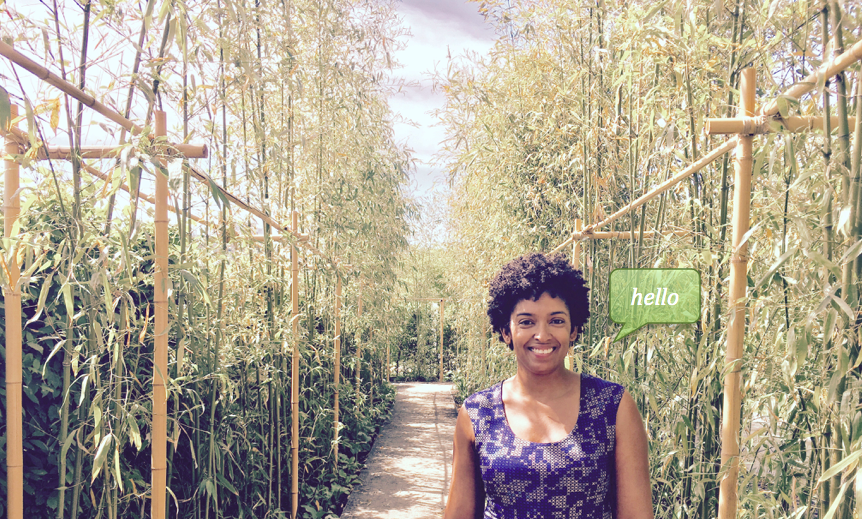

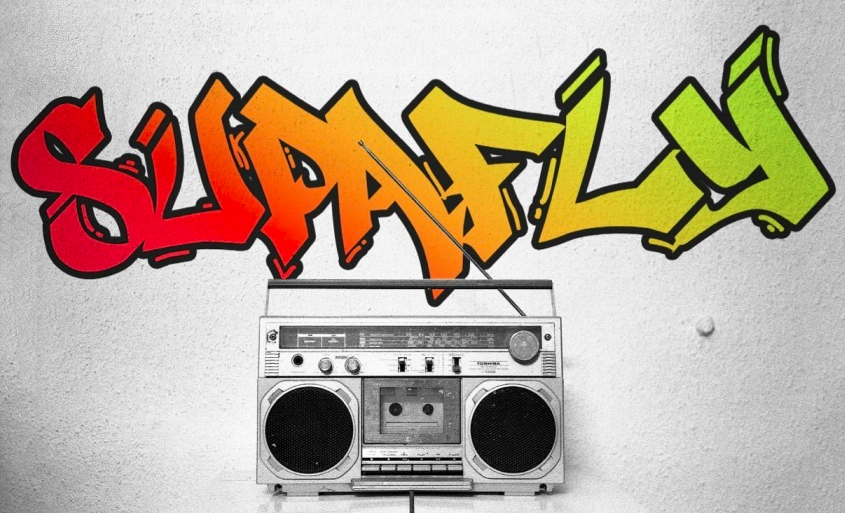
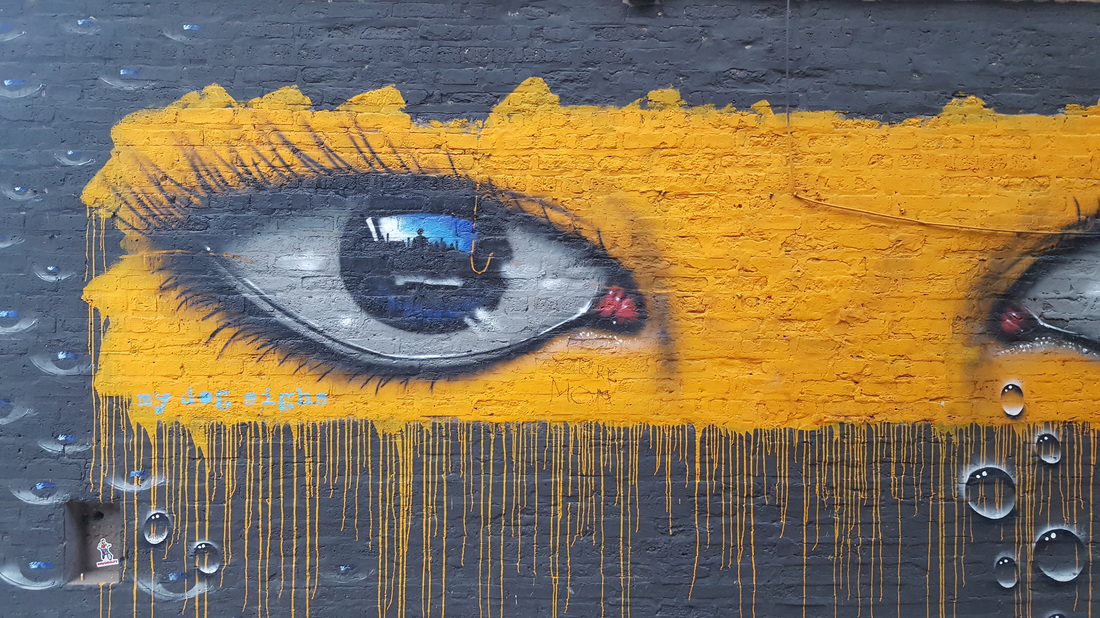
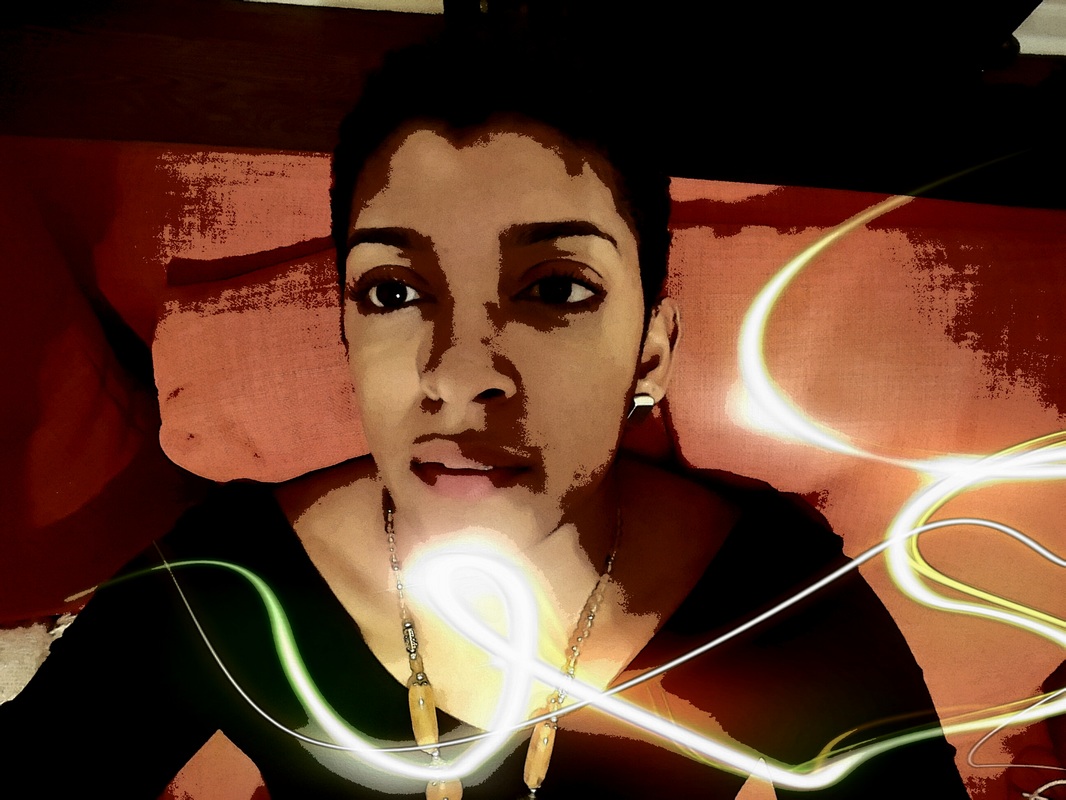

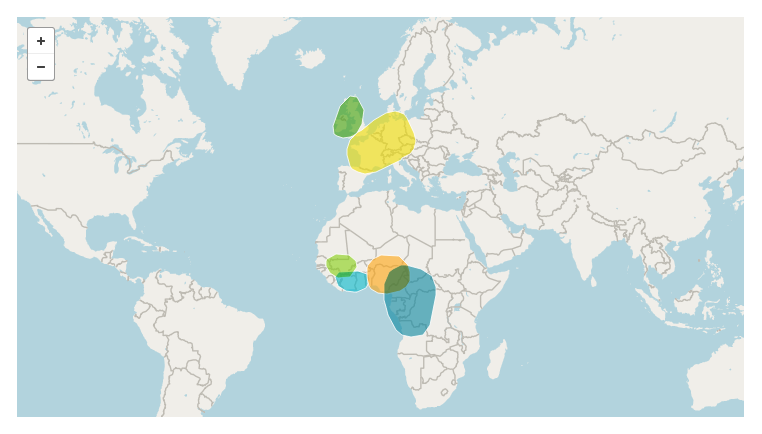

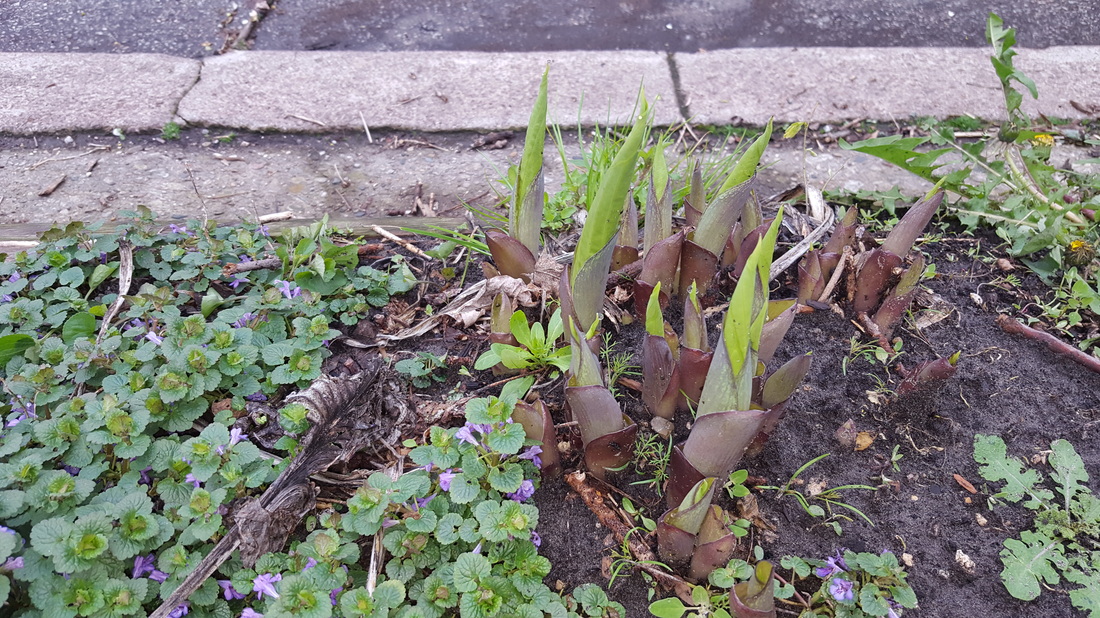
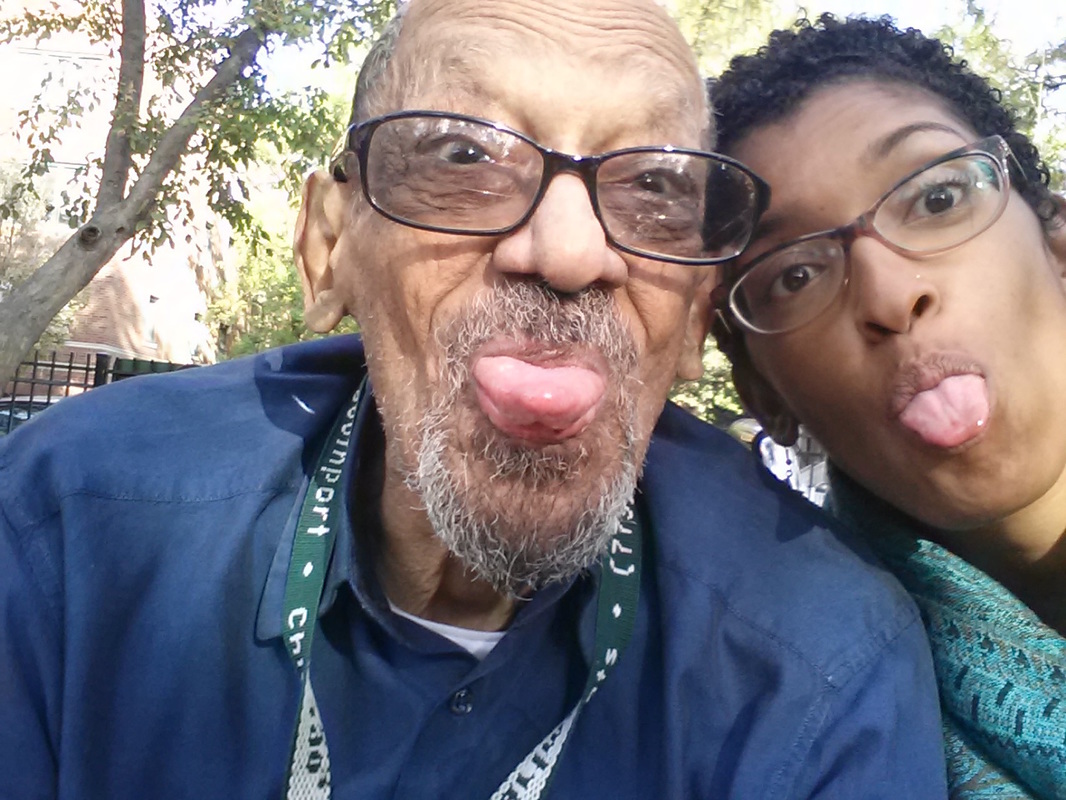
 RSS Feed
RSS Feed